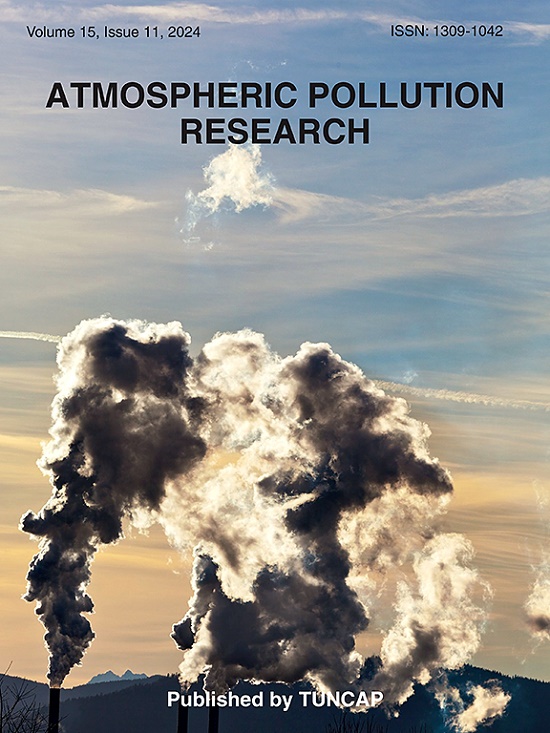Anthropogenic activities regulate the assembly strategy of conditionally rare taxa in airborne microbial communities
IF 3.5
3区 环境科学与生态学
Q2 ENVIRONMENTAL SCIENCES
引用次数: 0
Abstract
Airborne microorganisms, vital components of particulate matter, usually distribute unevenly and most species belong to rare taxa. Conditionally rare taxa (CRT) are the active members among rare taxa, and occasionally become dominant. However, knowledge of CRT remains limited in airborne microbial community. Here, we explored the spatial distribution and assembly mechanism of airborne bacterial and fungal CRT in regions with different intensities of human activities (urban, suburban, forest). Our results showed that microbial CRT occupied 39.58 %–40.88 % bacteria and 14.09 %–19.89 % fungi, respectively, while they contributed more than half of richness of whole microbial community. Air pollutants showed strong correlations with richness and diversity of airborne microbial CRT. Significantly spatial differences were also observed for CRT composition. The neutral community model and normalized stochasticity ratio revealed that stochastic processes dominated in the assembly of airborne microbial CRT. Furthermore, stochastic processes exhibited an obviously stronger impact on fungal CRT (NST = 0.662) than bacterial CRT (NST = 0.503), likely due to the broader niche breadth and higher migration rate for fungal CRT. Additionally, correlation analysis demonstrated that NO2 concentration was the most crucial factor regulating the CRT assembly and diversity. Overall, these findings advance our understanding of the assembly processes of airborne microbial CRT, which is critical to decipher their ecological functions.
人为活动调节了空气微生物群落中条件稀有类群的聚集策略
空气微生物是大气颗粒物的重要组成部分,通常分布不均匀,大多数种类属于稀有类群。条件稀有分类群(CRT)是稀有分类群中的活跃成员,有时会成为优势。然而,CRT的知识仍然有限的空气微生物群落。本文探讨了不同人类活动强度区域(城市、郊区、森林)空气中细菌和真菌CRT的空间分布及其组装机制。结果表明,微生物CRT中细菌占39.58% ~ 40.88%,真菌占14.09% ~ 19.89%,占整个微生物群落丰富度的一半以上。空气污染物与空气微生物CRT的丰富度和多样性有较强的相关性。CRT的组成也存在显著的空间差异。中性群落模型和归一化随机比表明,随机过程在空气微生物阴极射线管的组装中占主导地位。此外,随机过程对真菌CRT (NST = 0.662)的影响明显强于细菌CRT (NST = 0.503),这可能是由于真菌CRT的生态位宽度更宽,迁移速率更高。此外,相关分析表明,NO2浓度是影响阴极射线管组装和多样性的最关键因素。总的来说,这些发现促进了我们对空气微生物CRT组装过程的理解,这对破译它们的生态功能至关重要。
本文章由计算机程序翻译,如有差异,请以英文原文为准。
求助全文
约1分钟内获得全文
求助全文
来源期刊

Atmospheric Pollution Research
ENVIRONMENTAL SCIENCES-
CiteScore
8.30
自引率
6.70%
发文量
256
审稿时长
36 days
期刊介绍:
Atmospheric Pollution Research (APR) is an international journal designed for the publication of articles on air pollution. Papers should present novel experimental results, theory and modeling of air pollution on local, regional, or global scales. Areas covered are research on inorganic, organic, and persistent organic air pollutants, air quality monitoring, air quality management, atmospheric dispersion and transport, air-surface (soil, water, and vegetation) exchange of pollutants, dry and wet deposition, indoor air quality, exposure assessment, health effects, satellite measurements, natural emissions, atmospheric chemistry, greenhouse gases, and effects on climate change.
 求助内容:
求助内容: 应助结果提醒方式:
应助结果提醒方式:


